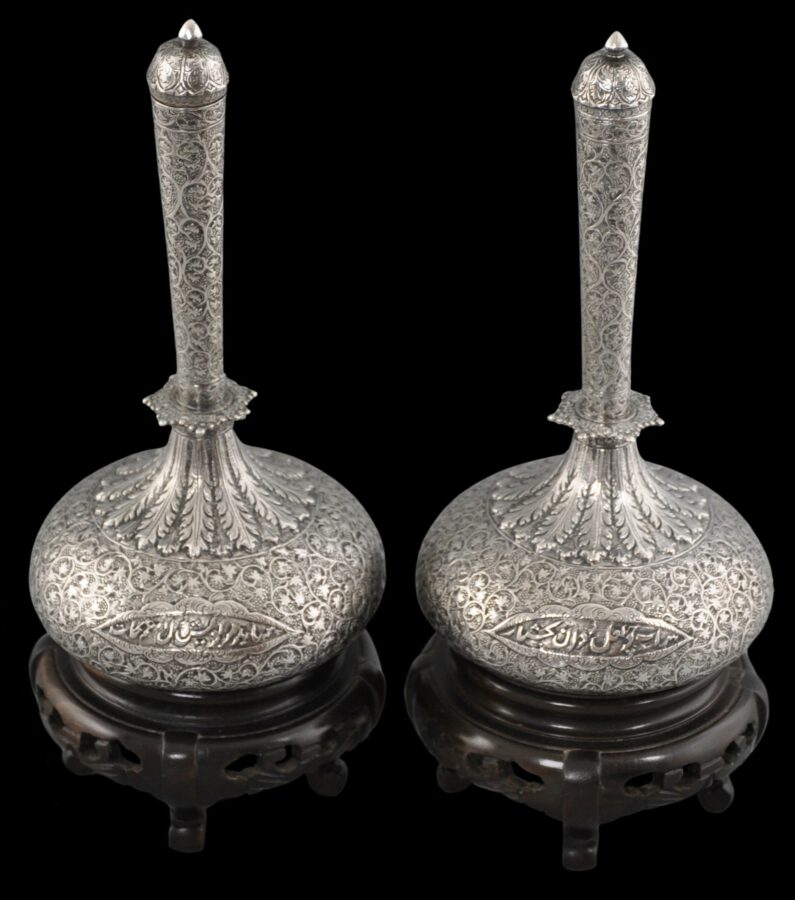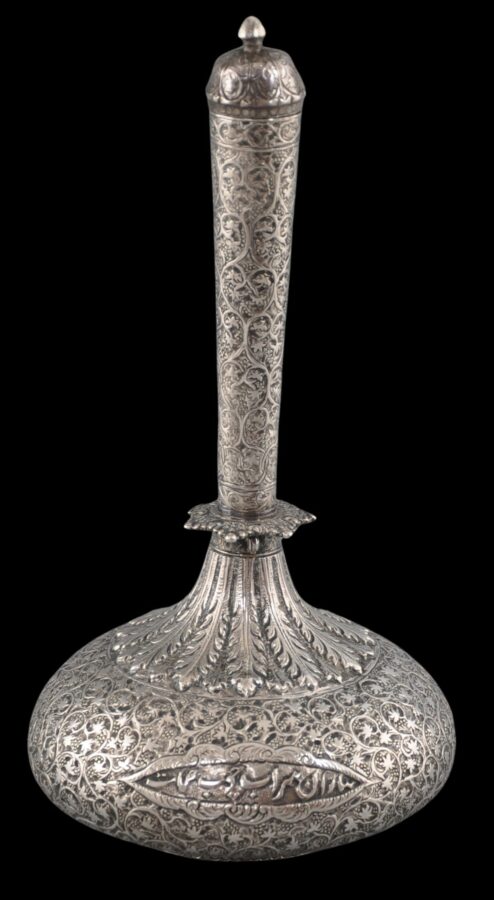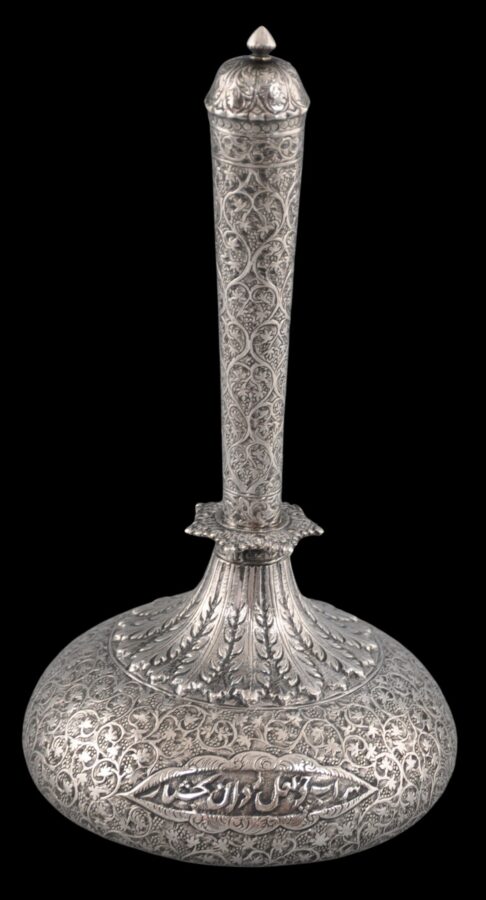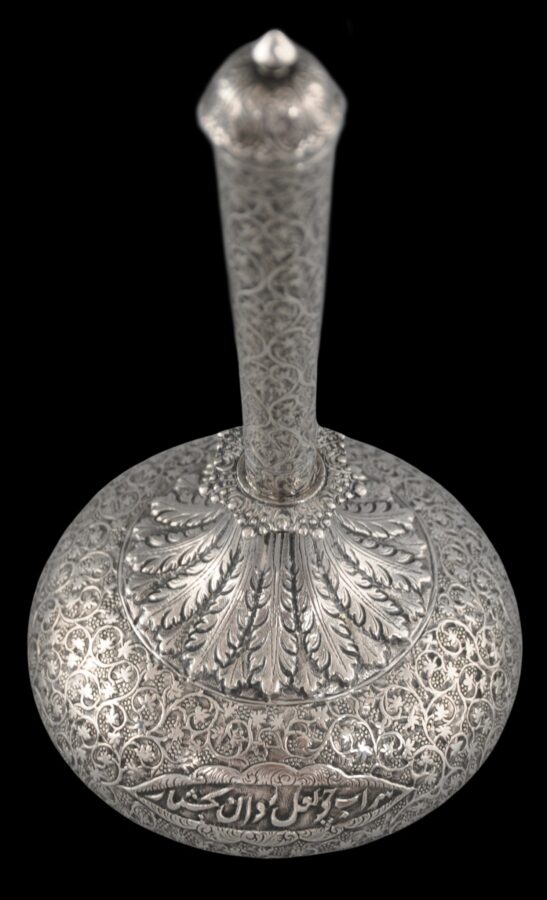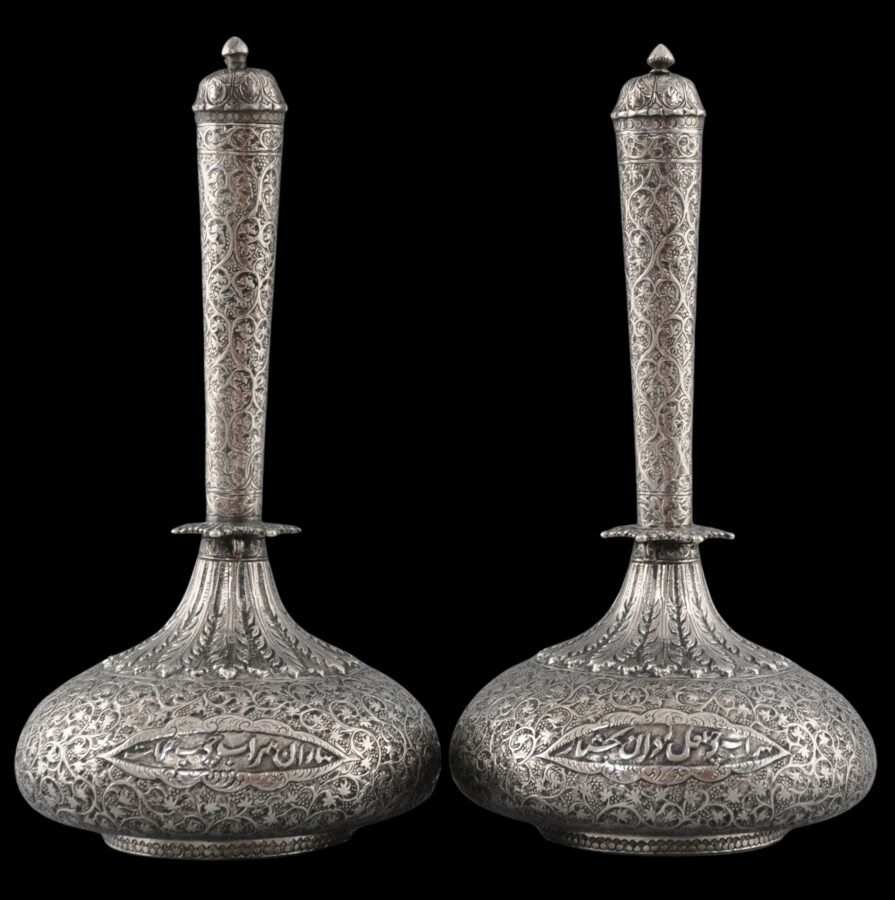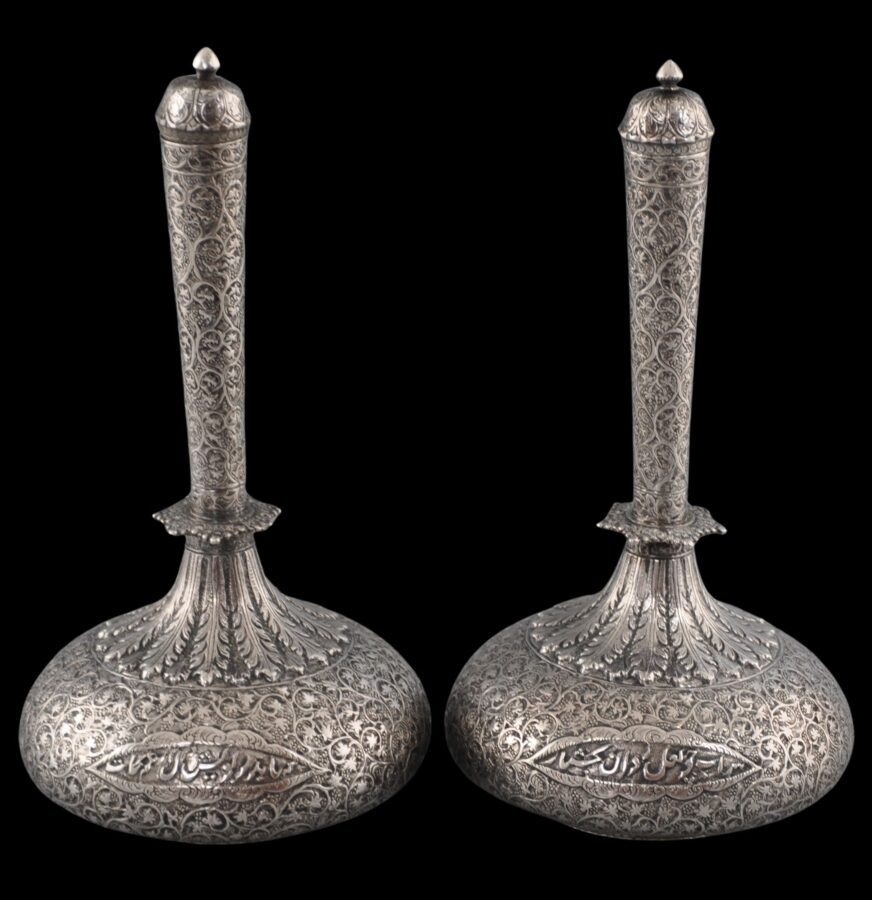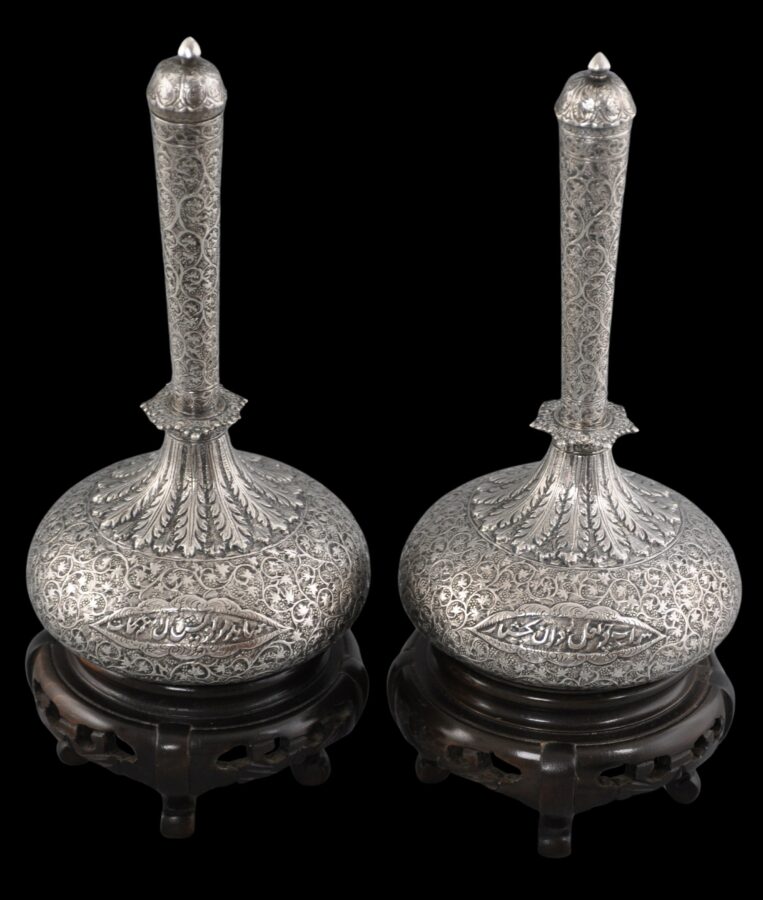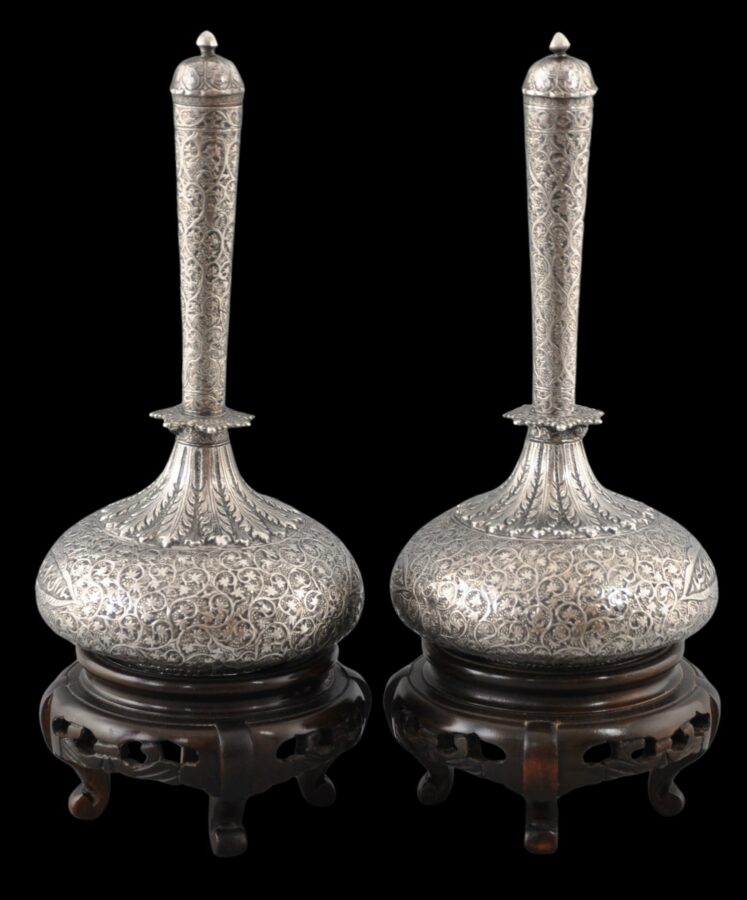Enquiry about object: 9554
Fine Pair of Inscribed Lucknow Silver Wine Flasks (Surai)
Lucknow, India circa 1870
height: 17.8cm, diameter: 9.6cm, combined weight: 434g, height with stand: 23.5cm
Provenance
Previously in the collection of the Pryce Family, Gunley Hall, Wales.
This miniature pair of silver wine flasks (surai or surahi) has been finely chased all over with a grape vine pattern which features both grapes and leaves. The vines are arrayed in tight trellised scrolls. Unusually, each also has two elliptical cartouches chased with Persian script extolling the virtues of wine and overtly suggesting the function of these vessels.
Each stands on a low ring foot and has a mallet-form with a flattened, spherical body, and a thin, tapering neck that widens towards the mouth. Each neck has a leafy collar decorated with grapes above a wide, cascading band of acanthus leaves. Each has a domed stopper similarly decorated with the grape motif and which rises to a small, bud-like finial.
The grape pattern occasionally was employed in 19th century silverwork from Lucknow. Wilkinson (1999, p. 126) describes the grape pattern as the “earliest recognisable pattern employed on silver made in Lucknow…”
With regards the inscriptions, one is inscribed:
Shar?b ch? la’l rav?n be-jash?r
the wine as ruby-red as a hunting ground
and on the other side:
Shar?b-i masdaq ch? r?’? shik?r
a wine as brave as when going to the hunt.
The other is inscribed:
Be-?r ?n shar?b ch? beh s?t
bring forth that wine of good repute
and:
Ke bayad za b?-ish dil-i a’m zak?t
that its scent must give alms to all hearts.
The two flasks are in fine condition and are accompanied by two Chinese carved rosewood stands, on which they sit. These are separate additions but might have been added in India.
The two flasks have come from Pryce Family, Gunley Hall, Wales. Several members of the Pryce family had an association with colonial India, which perhaps explains the provenance of the pair. Lt.-Col. Douglas Davidson Pryce (1848–1923) served in India. His son, who would become General Sir Henry Edward ap Rhys Pryce, KCB, CMG, DSO (1874-1950), was born in India, and was a member of the British expedition to Tibet, (the ‘Younghusband expedition’), 1903–04.
References
Birdwood, G., The Industrial Arts of India, 1880.
Dehejia, V., Delight in Design: Indian Silver for the Raj, Mapin, 2008.
Wilkinson, W.R.T, Indian Colonial Silver: European Silversmiths in India (1790-1860) and their Marks, Argent Press, 1973.



